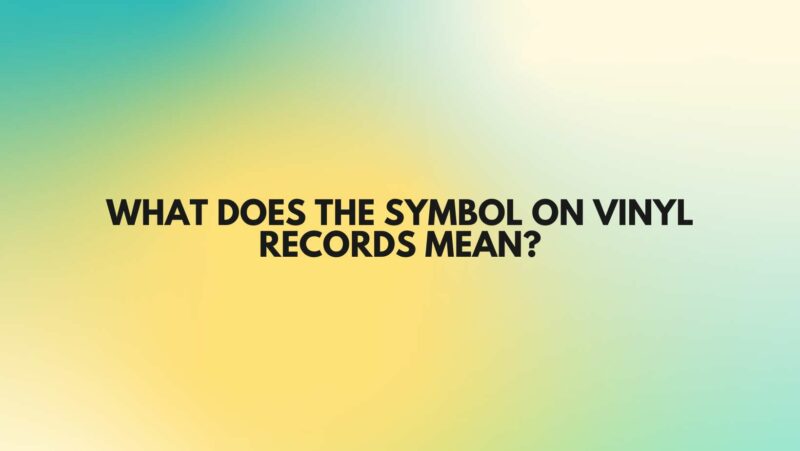Vinyl records, with their analog warmth and timeless charm, have been a cherished medium for music enthusiasts for decades. Beyond the grooves that carry the music, vinyl records often feature various symbols and markings. These symbols serve multiple purposes, from indicating specific audio characteristics to providing historical context. In this comprehensive article, we will delve into the world of symbols on vinyl records, decoding their meanings and unveiling the stories they tell.
Section 1: The Significance of Symbols
Symbols on vinyl records can convey essential information to collectors, audiophiles, and music enthusiasts. These symbols often appear on the record labels or in the runout groove area and can include:
- Speed Indicators: Symbols that denote the record’s playback speed, such as 33⅓ RPM, 45 RPM, or 78 RPM, are crucial for setting the turntable correctly.
- Stereo and Mono Indicators: Symbols or labels indicating whether the recording is in stereo (often denoted as “STEREO” or “STEREOPHONIC”) or mono (“MONO”).
- Record Side Indicators: Alphanumeric symbols like “A” or “B” designate the side of the record, allowing listeners to differentiate between the A-side and B-side.
- Catalog Numbers: Alphanumeric codes that serve as reference numbers for the release, helping identify the album, single, or EP.
- Label Variations: Symbols or markings that indicate label variations or specific pressings, reflecting changes in ownership, design, or branding over the years.
- Collector’s Edition Indicators: Symbols denoting limited or collector’s edition releases, often highly sought after by collectors.
Section 2: Decoding Speed Indicators
Playback speed indicators are fundamental symbols found on vinyl records, signifying how fast the record should rotate on the turntable. Common speed indicators include:
- 33⅓ RPM: This symbol represents revolutions per minute, indicating that the record should be played at 33 and one-third rotations per minute. It’s the standard speed for most full-length LPs.
- 45 RPM: Records with this symbol should be played at 45 rotations per minute. It’s typically used for singles and smaller releases.
- 78 RPM: Less common today, this symbol signifies 78 rotations per minute and was used for early shellac records.
Section 3: Stereo and Mono Indicators
Stereo and mono indicators inform listeners about the recording’s audio format:
- STEREO: This symbol indicates that the recording is in stereo, which means it features separate audio channels for a more immersive listening experience.
- MONO: Conversely, “MONO” denotes a monaural recording, where the audio is blended into a single channel. Mono records were more prevalent in the early days of vinyl.
Section 4: Catalog Numbers and Label Variations
Catalog numbers are alphanumeric codes used by record labels to identify specific releases. They help collectors and enthusiasts distinguish between various pressings and editions. Label variations can also provide historical context by reflecting changes in a label’s design or ownership over time.
Section 5: Collector’s Edition Indicators
Symbols or markings that denote limited or collector’s edition releases are often highly sought after by collectors. These releases may feature unique cover art, colored vinyl, or other exclusive content.
Section 6: Conclusion
Symbols on vinyl records are not mere embellishments; they are gateways to understanding the record’s characteristics, historical context, and collector’s value. Whether you’re setting the correct playback speed, identifying mono or stereo recordings, or hunting for limited editions, these symbols offer valuable insights to those who appreciate the vinyl medium. By decoding these enigmatic markings, collectors and enthusiasts can gain a deeper appreciation for the vinyl records they treasure.


